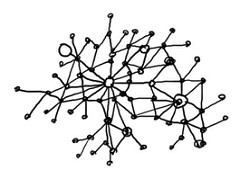 Last week I wrote a post on ‘students as customers’ in the context of a more corporatised, commoditised Higher Education market. It was interesting then to see another post today discussing the emerging trend of employers dropping requirements for degrees as part of their recruitment criteria, instead selecting candidates
Last week I wrote a post on ‘students as customers’ in the context of a more corporatised, commoditised Higher Education market. It was interesting then to see another post today discussing the emerging trend of employers dropping requirements for degrees as part of their recruitment criteria, instead selecting candidates
based on merit, rather than credentials, often by assessing candidates with psychometric testing or other performance based tests
This caught my attention for two* reasons. Firstly, it returned my thoughts to the student as a customer, and the likely increase in their willingness to leave the Higher Education system (or not engage in it at all) if it is not meeting their expectations – in this case employability. Secondly, it made me reflect on the role of MOOCs, not as a replacement for a degree, but as a potential perceived indicator of merit in a landscape where a degree is no longer a necessity.
